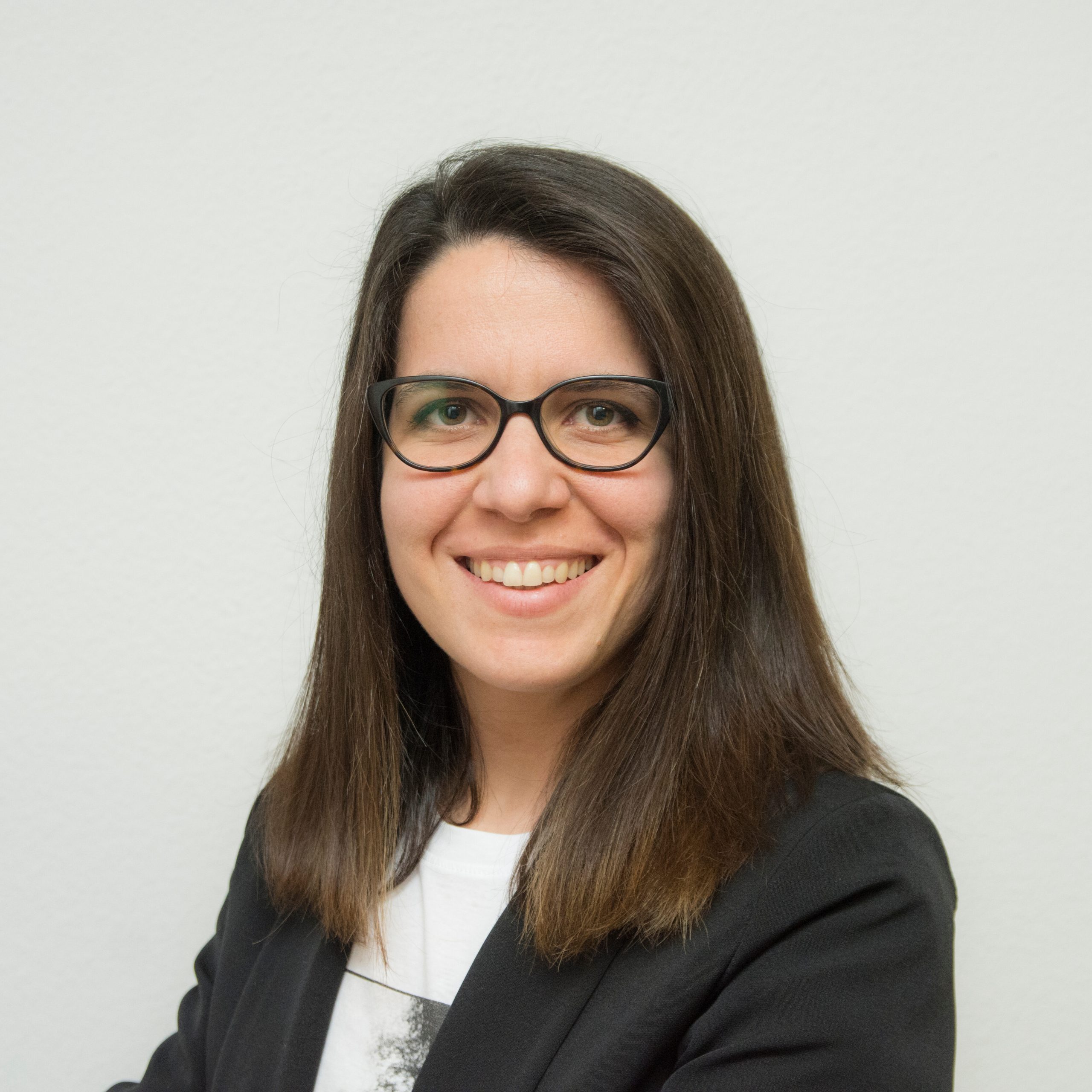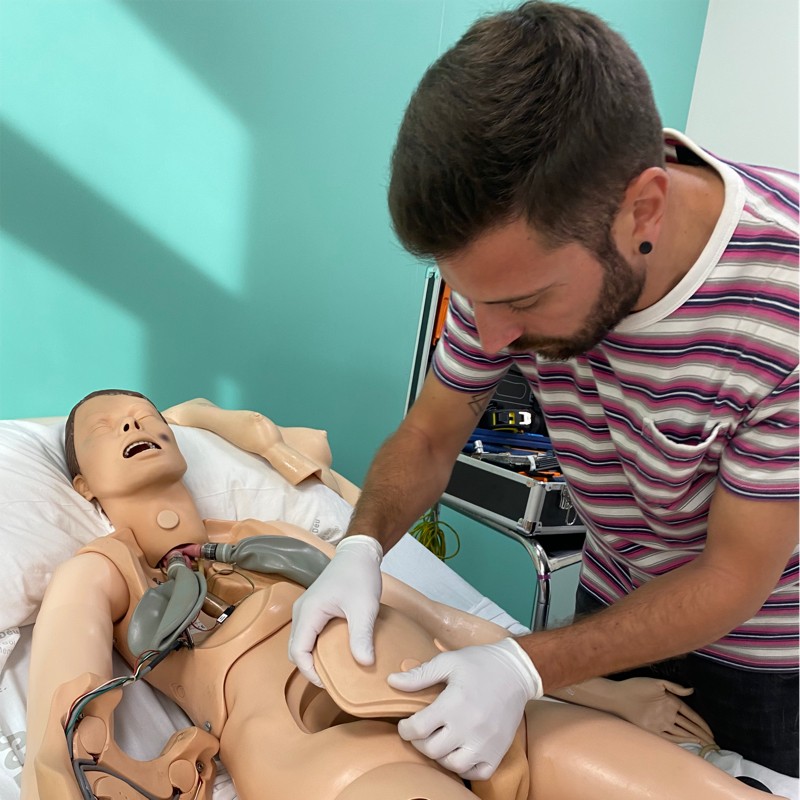Verónica Méndez López, our Regional Editor for Spain, met with Javier Mora to talk about his career path, the role of the simulation technician within each centre and the professional network he is building.
Verónica Méndez López, our Regional Editor for Spain, met with Javier Mora, a passionate simulation technician at the Sant Joan de Déu Teaching Campus in Sant Boi de Llobregat (Barcelona), to talk about his career path, the role of the simulation technician within each centre and the professional network he is building.
Javier Mora Repullo

My name is Javier Mora, an Asturian guy who after several years in Catalonia has already fallen in love with this land for its climate and good Mediterranean food.
I work at the Teaching Campus of Sant Joan de Déu, in the simulation centre SAVI (Simulation, Learning, Virtuality and Innovation) as a Clinical Simulation Technician, I have just completed my third year here.
The profile of the simulation technician is a very multidisciplinary profile, I know the position and many of you, your stories are very varied and your backgrounds and professional trajectories are surprisingly different, what is yours?
I come from a land with a lot of steel industry, and despite my interest in sport and personal care, I studied project development of facilities. After a year in the Basque Country also working in the development of equipment for the profiling and automotive industry, I landed for personal reasons in Catalonia, and here, as I wanted to make a change in my life, I had in mind that I wanted to dedicate myself to nutrition, an area for which I would have already been trained at that time. This introduced me to the world of healthcare, and I discovered clinical simulation by chance, and specifically the job of simulation technician, which I got to know in more depth because I went to Madrid to the SESSEP national congress where simulation technicians from all over Spain were taking a course ….. and that’s where I got hooked and knew I wanted to dedicate myself to this.
Do you specialise in a specific area or function?
Within this profession there are many fields, one of them is moulage, which is how to perform the special effects, make-up, creation of wounds as well as the manufacture of task trainers, which are tools that we create for the practice of technical procedures for students, such as wound healing, sutures or blood extraction, giving it greater fidelity. This is the field I am most passionate about and for which I was trained in special effects in film schools.
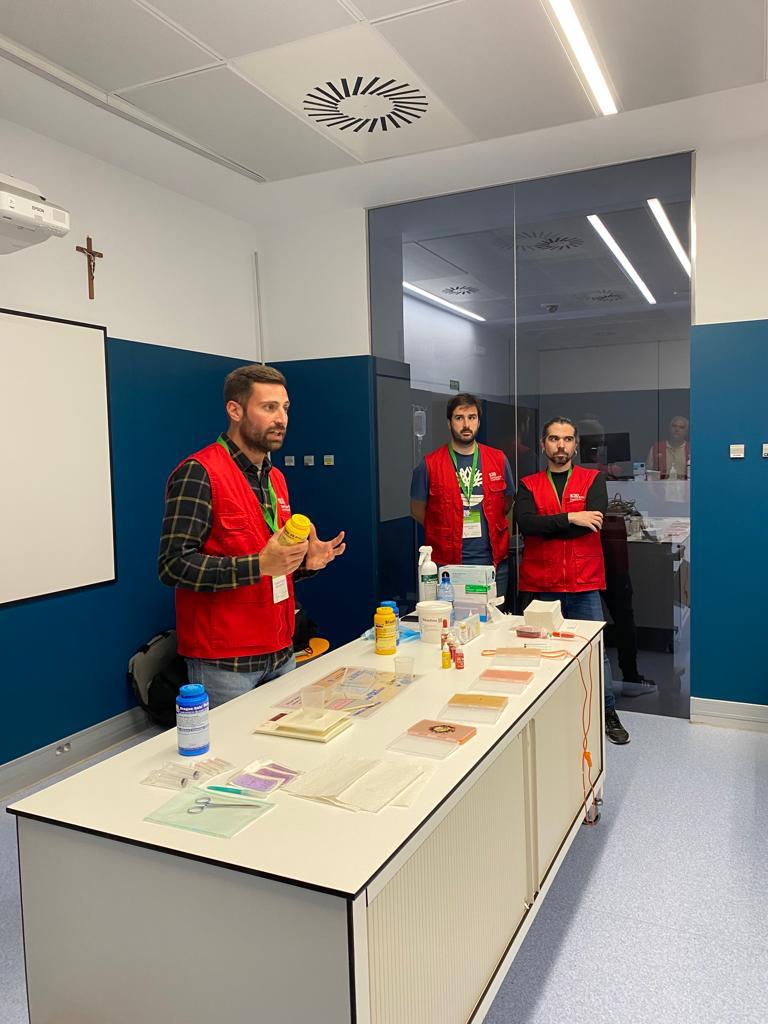
To understand your role, it will help to understand your centre’s activity, tell us a little about it.
We are the Sant Joan de Déu Teaching Campus, located in Sant Boi de Llobregat, south of Barcelona, and we are a centre affiliated to the University of Barcelona. We offer a degree in Nursing, training courses for nursing assistants, on-site and online, health documentation and administration and social integration. We also have different masters and postgraduate courses, especially in paediatrics and paediatric ICU, as many of our students end up being future professionals at the Sant Joan de Déu maternity and children’s hospital, located in Esplugues and a reference in this field.
We cover some 1300 students in total, all of whom pass through our simulation centre several times throughout the course to perform clinical skills, where they work on more technical processes, theoretical and practical exercises, workshops and simulations of different areas according to the Simzones model.
In recent courses we have implemented the BRIDGE model, with several instructors trained in it. It is a model of communication, of relational styles, which was born from the business world, as the creators saw that the greatest conflicts that arose in the company were due to misunderstandings when communicating between colleagues. We are transferring this to multidisciplinary teams, such as doctors, nurses, assistants …. and also to communication with patients and their families, with specific training in communicating bad news. These BRIDGE courses are becoming very popular in primary care centres and mutual insurance companies, which we also train, as in addition to our internal training we also offer external courses.
As in most simulation centres we work with mannequins, but our strength is working with professional actors. We have a pull of actors and actresses with whom we have been working for more than 10 years. In addition, the agreement signed with the Barcelona School of Theatre allows us to have profiles that bring greater fidelity to the simulations, so that, in addition to the more clinical part, the students also interact with the simulated patients, recreating practically real cases.
Tell us about the team of technicians who manage to materialise all this activity you are talking about.
At the SAVI centre we are currently two simulation technicians, my colleague Isaac and myself. We perform various functions, some of which are for the running of the centre’s activities and others that are more specific to the simulations.
Within the daily functions of the centre, we are in charge of the assembly and preparation of the classrooms and rooms depending on the activity to be carried out, that is to say, we manage the medical equipment, from order management and purchasing, to stock management, preparation of this in the spaces for the contextualisation and preparation of the equipment required depending on the activity to be carried out.
On the other hand, we create task trainers so that the students can carry out more technical practices, we take care of the maintenance of the centre’s mannequins, taking charge of repairs or contacting commercial companies if necessary. We also manufacture simulated medication, for safety reasons we do not use real medication and we recreate it ourselves with its labelling. We also carry out the sterilisation processes, as in order for the students to learn to carry out all the techniques correctly, there are many of them in which sterile material is used and we take care of simulating this process.
As for the execution of the clinical simulations, we are involved from the very beginning in team meetings with instructors, facilitators, teachers and actors. At the SAVI centre we carry out the whole process of carrying out simulations as a team, each one has their role within the simulation but we all work in alignment from the very beginning. We technicians are in charge of the scenography of the room, as we do not always work in hospital room environments, the preparation of the material, the medication and the moulage of the mannequins or actors. During the simulation, we are present in the control room together with the expert in the subject that is being carried out and we are in charge of the control of the mannequin, the constants of the monitor and communicating with the actors through an earpiece. In our centre we carry out the simulations in situ, which means that the students are watching live through a glass as the case is being carried out by the participants, which is why all the audiovisual management is very important, an area that we also take care of, as well as giving support to teachers, participants and actors in whatever they need.
As for our organisation as technicians, we organise ourselves and divide up the tasks, and although we all cover any type of need or function, Isaac’s areas of specialisation are the management of medical equipment, as he is a trained nursing assistant, as well as the audiovisual field, as he was also a DJ by vocation and worked as one. I specialise in the maintenance of equipment and moulage, as well as the creation of task trainers, but, as I said, the two of us always work together and feed off each other.
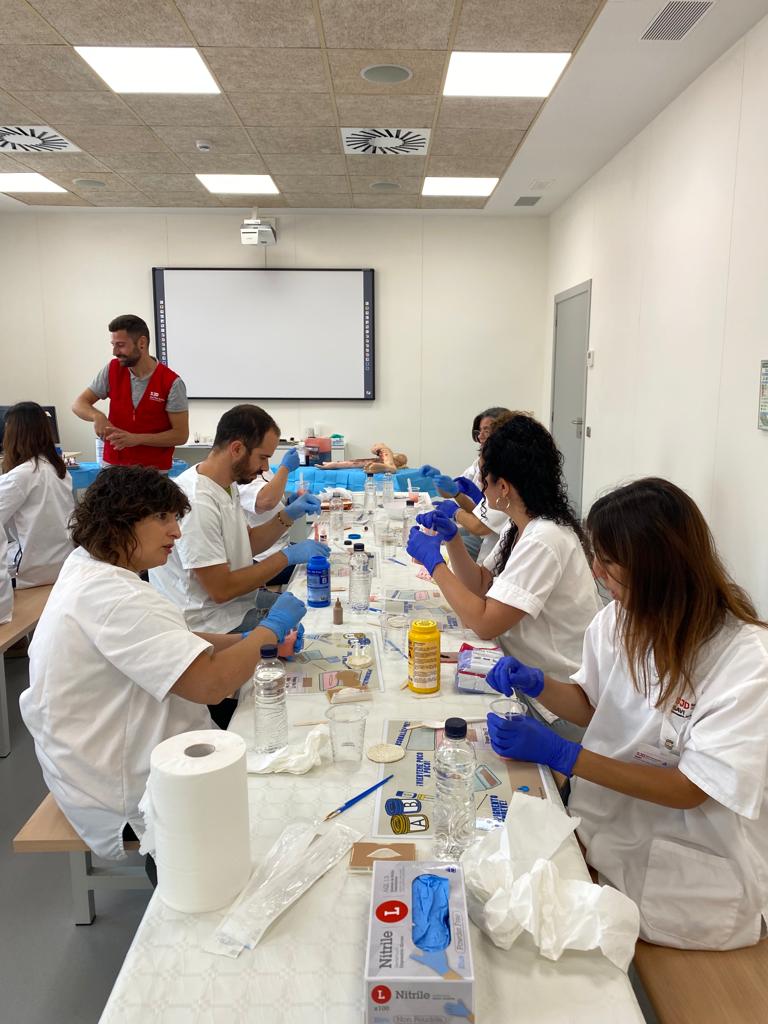
How do you think clinical simulation is evolving technically?
I believe that it is evolving along two lines, technology and realism. On the one hand, adapting to the current times, where the blackboard and paper are becoming obsolete and young people study with tablets, it is important to be up to date in this field, students today grow up learning through video games or audiovisual stimuli, even virtual reality is beginning to gain a foothold in our sector, so I consider it very important to be at the forefront in this aspect.
On the other hand, the issue of realism, I am not only talking about simulations in which maximum fidelity is sought, not only visual, but also conceptual and emotional, also realism when manufacturing a training tool for students or professionals to practice different techniques, the recreation of parts in 3D printing, as well as the imitation of the textures and layers of the skin is very important for students to learn the techniques with the greatest possible realism for when they have to put them into practice in their professional life. As I sometimes say, “would you get on a plane with a pilot who has never taken the controls, not even in a simulator?” Well, in the healthcare world it is the same, we have to make sure that a healthcare professional reaches a patient with “many hours of flight time” so that we will gain safety for the patient and the professional.
In our centre in particular, both technicians are still training, as I mentioned before, one can take the lead in one field and the other in others, but we both get feedback from each other. Isaac is currently training in 3D animation and interactive environments, and I am currently continuing my training in special effects characterisation at a film school in Barcelona. I think this is very important for the future because of the teamwork we can achieve by covering both lines of growth in simulation.
There is one aspect that I am becoming aware of the more I talk to simulation technicians, and that is that this is a highly multidisciplinary position, which requires a mastery of equipment maintenance to enable repairs, technology to enable programming/configuration, management to ensure stock supply, schedules, equipment inventory,… health aspects that make it possible to recreate and contextualise environments as faithfully as possible, moulage and characterisation to recreate pathologies and symptomatology that give realism to clinical cases, logistics that make it possible to optimise material operations, languages if we take into account that simulators and part-trainers usually come from other countries and software/manuals are in another language, audiovisuals for the management of videos and audio during and post-simulations, high imaginative and creative component for the creation of customised task-trainers or simply to solve limitations of existing simulators to cover teaching needs,…. … What should a simulation technician do to be trained in all the disciplines that the job requires? In which areas should he/she be trained to be a competitive profile?
At present, there is no specific training for simulation technicians. As you say, it is a profession that covers a wide range of very diverse fields and, moreover, depending on the needs of each centre, one profile or another is required. In the beginning, the centres used to look for profiles in the healthcare field, but this has been changing over the years.
Last year I did the Fellowship in Clinical Simulation at the University of Barcelona, and I think it is essential for technicians to be trained in simulation, as this will help them to perform their duties better. Knowing the areas of the simulation to prepare the cases, knowing the language, the timing of the simulation (prebriefing, scenario, debriefing), as well as the methodology, will greatly facilitate their work and the ability to be well aligned and work as a team with instructors and facilitators.
Once you have acquired the basic knowledge in simulation, there are several specialisations in this profession, from audiovisual, software management, video editing, knowledge of medical equipment, scenography and moulage and, more recently, R&D with 3D printing and virtual reality is becoming more and more popular.
The ideal, which at present does not exist, would be for there to be specific simulation technician studies that would cover all these training areas. Some centres are offering courses for technicians, but they do not provide homologation, and what would be necessary would be to create regulated training that would officially regulate our profession. We at our Campus, as an educational centre, are working along these lines, perhaps a higher course that can be accessed from different branches. At the moment, as specific training in one of the areas we have launched a “basic course in moulage and creation of task trainers” to teach simulation technicians and other profiles that may interest them (instructors, facilitators,…), to make working tools to perform technical skills and some basic concepts in make-up (creation of wounds, burns, fractures ….) of which we will make another edition in November.
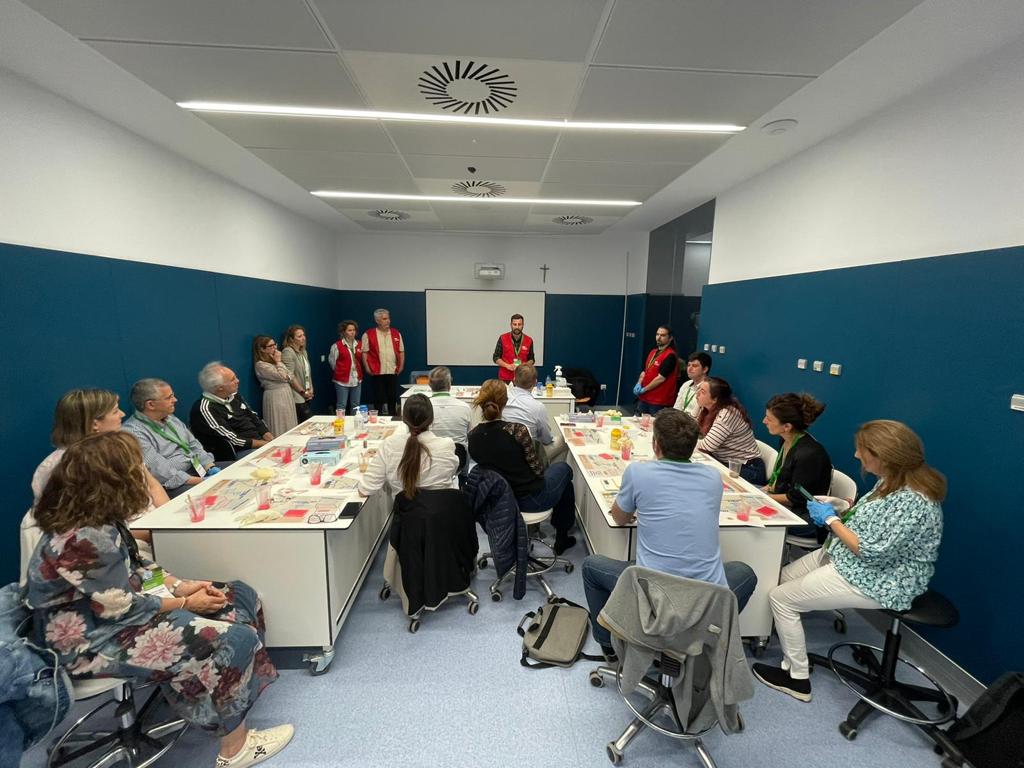
How interesting what you are telling us, and interesting initiative from your centre, what has been your perception and sensations in this first edition already carried out?
It was very enriching to be able to give this moulage and task trainer creation workshop because, although I taught the knowledge that I am acquiring after training and growing professionally in my centre, during the workshop, doubts arise that everyone has in their day-to-day work and we all learn from this. It is very important to provide feedback to each other,as it is not a profession in which competencies are well defined, since each simulation centre has a different type of activity and different needs, it is very important to know the problems that each one faces and how to solve them, in this way we all grow in knowledge and resolution capacity in an exponential way.
Such is the collaborative spirit of the simulation technicians of all the Spanish centres that, as we have met at each SESSEP congress, the need was born to create a whatsapp group to solve doubts, share experiences, problems and solutions so that we can constantly help each other, a simulator breakage that you don’t know how to solve, an ink mark on synthetic leather that you cannot remove, a part-trainer that you need to acquire to meet a teaching need and you want opinions and experiences of others… It is our daily forum. I myself, for my Fellowship TFF, needed the support of simulation technicians from all over Spain, I wanted to carry out a study on the role of the technicians, where they came from, studies, functions, competencies …. and for this I carried out a survey of all of them and practically all of them were willing to collaborate, it is very enriching to have a collaborative network where there are technicians, from Universities and Hospitals from almost all parts of Spain, willing to help each other.
In the Fellowship I met Juancar, the simulation technician from the Faculty of the Clínic in Barcelona. Together with him, joining our TFFs, we made an oral presentation for the last SESSEP congress, in which we drew the conclusions I mentioned before about the role of the technicians together with the experiences that different simulation technicians had had when they first encountered this still unknown profession, with this work and this presentation we wanted to try to give some visibility to the work of the technicians in a simulation centre. This also prompted us to create a profile on the social network Instagram to upload experiences and work that we technicians are doing in our day to day, it has only been up for a couple of months but we hope to be able to grow and give vision to this beautiful profession.
The lack of training to standardise our knowledge together with the concern of all the technicians in Spain to progress and be in continuous evolution has generated a very high degree of collaboration between us, regardless of the centre to which you belong. Through each other’s experiences we are reinventing ourselves and growing.
Of all the members of this national group, those technicians associated with SESSEP also form a working group within this society, with which we hope to continue to grow, to establish ourselves as a recognised and regulated profession and to define our own competencies, as we are mainly simulation technicians, including some members who are responsible for simulation centres and manage teams of simulation technicians, and between us we cover a wide range of centres: Hospitals, Universities, Training Centres, some oriented towards the training of active healthcare professionals, others to future professionals, some with high theoretical-practical teaching, others with high fidelity simulations, some covering mainly Simzones 0-2 others 2-3, others only Simzone 4. … what better profiles to meet the needs of all types of centre, activity and Spanish geography.
In Spain, the simulation technician is still a very recent profession, but in the USA, pioneers of clinical simulation who are decades ahead of us, there is an association called “simghosts” which is made up of specialists in clinical simulation technology and they are already recognised at a professional level. The ideal would be to import this model here and to be able to continue working in an associated manner within a recognised professional framework.
READ ALSO


